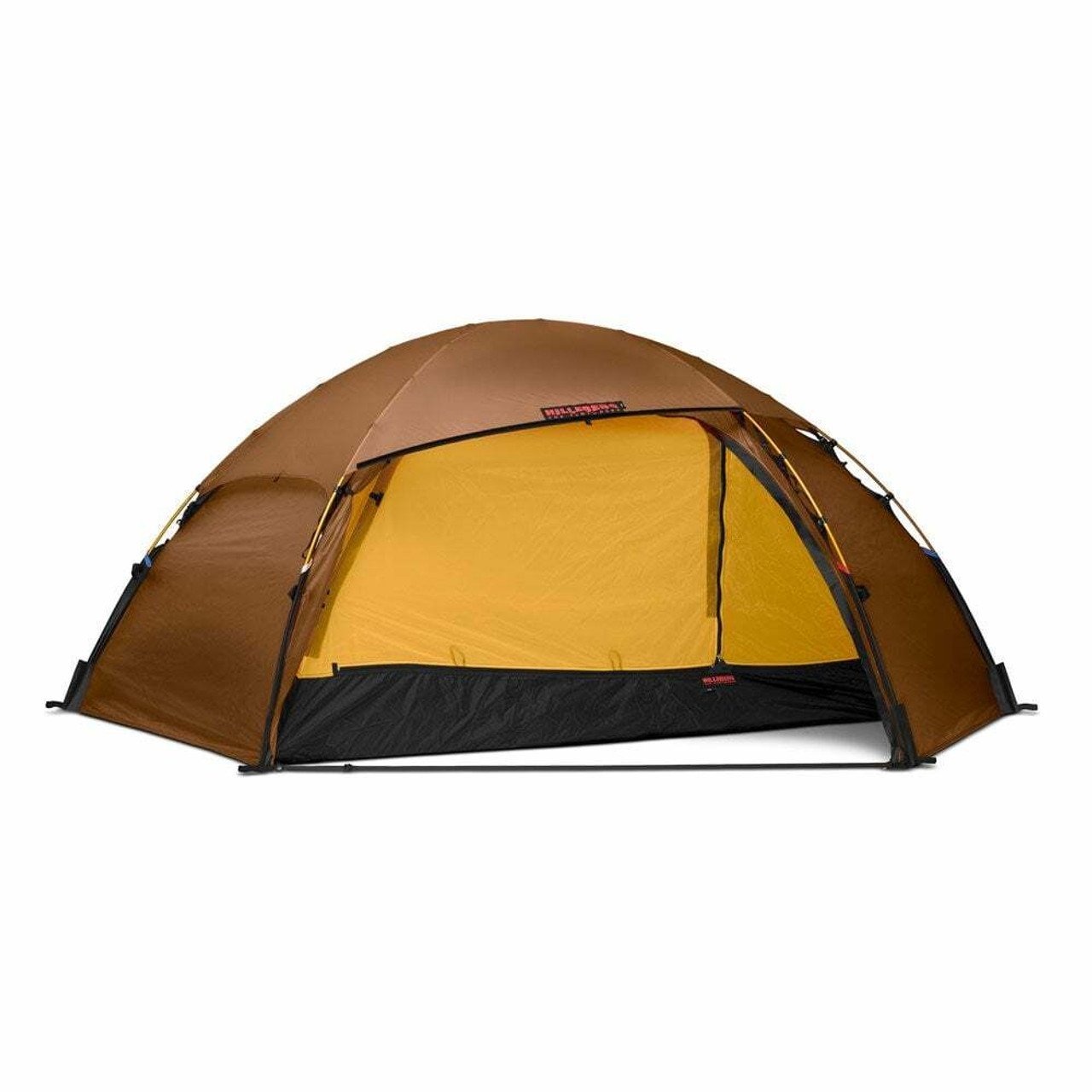Wild Camping All Seasons: The Ultimate Gear Guide
Table of Contents
Last updated: July 6, 2025
3-Season vs 4-Season Gear: The Complete Wild Camping Guide
The wind howled across Pen-y-ghent’s exposed ridge as I struggled with my tent’s guy lines, cursing my decision to bring 3-season kit into what was rapidly becoming a 4-season situation. Ice pellets stung my face whilst I wrestled with inadequate pegs, learning the hard way why equipment season ratings actually matter.
That November night in the Yorkshire Dales taught me more about equipment choices than years of fair-weather camping ever could. Understanding the real differences between 3-season and 4-season kit isn’t just about specifications—it’s about staying safe and comfortable when conditions deteriorate.
My Journey from Fair-Weather to Four-Season
Three years ago, I was that bloke who thought “it’s only autumn, how bad can it be?” My kit cupboard reflected this optimism: a lightweight sleeping bag rated to 5°C, a budget 3-season tent from Decathlon, and a basic foam mat that compressed to the thickness of cardboard.
The reality check came gradually. First, a soggy weekend on Kinder Scout when my sleeping bag’s synthetic filling clumped into useless lumps. Then a spring trip to Ingleborough where unexpected snow left me shivering in equipment designed for mild conditions. Each experience taught me that Yorkshire weather doesn’t respect calendar seasons.
Now, after testing dozens of sleeping bags, tents, and sleeping mats across genuine four-season conditions, I’ve learned that choosing between 3-season and 4-season equipment isn’t about being hardcore—it’s about matching kit to actual conditions rather than hoped-for ones.
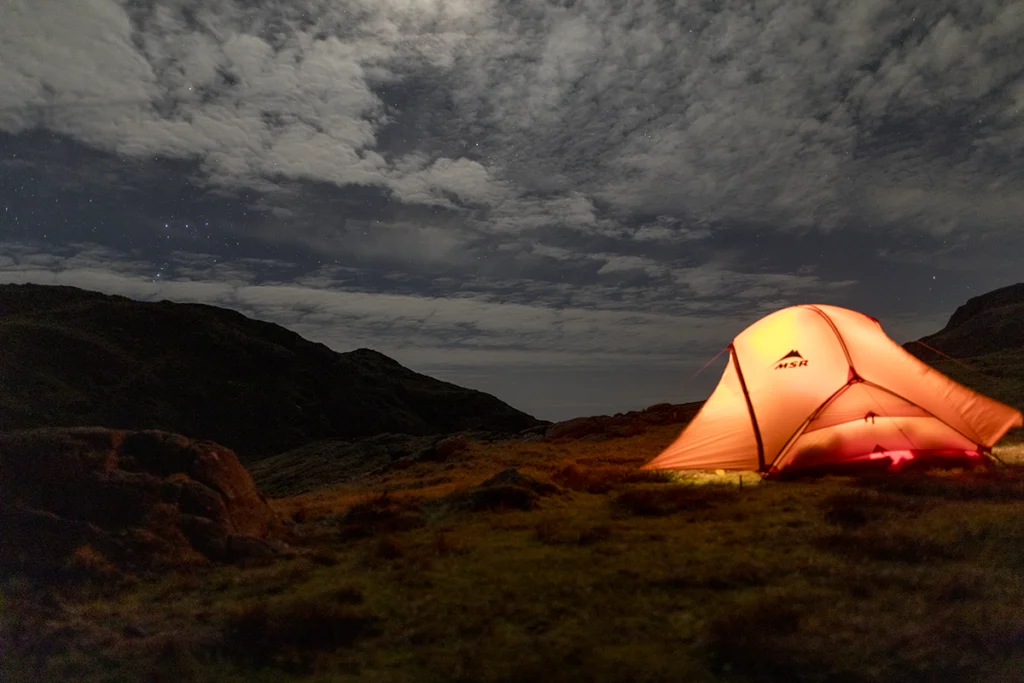
What 3-Season vs 4-Season Actually Means
The outdoor industry’s season ratings create more confusion than clarity. A “3-season” sleeping bag might handle spring, summer, and autumn in the marketing department’s imagination, but British weather has other ideas.
3-Season Equipment Characteristics:
- Designed for temperatures above freezing
- Emphasises weight savings and packability
- Adequate for mild conditions but limited resilience
- Suitable for most people’s introduction to wild camping
4-Season Hardware Characteristics:
- Built for winter and extreme conditions
- Prioritises protection over weight
- Handles freezing temperatures and harsh weather
- Essential for serious year-round adventures
The crucial distinction isn’t just temperature tolerance—it’s the safety margin when conditions exceed expectations.
What I Love About 3-Season Kit
Manageable Weight and Bulk
My Rab Mythic 600 sleeping bag weighs just 885g whilst providing genuine comfort to around -5°C. Compare this to winter bags that often exceed 1.5kg, and the appeal becomes obvious for multi-day trips where every gram matters.
Versatile Performance Range
Quality 3-season equipment handles more conditions than its rating suggests. My Canon EF 24-105mm f/4L USM lens sees action in similar conditions—reliable and adaptable without being specialised for extremes.
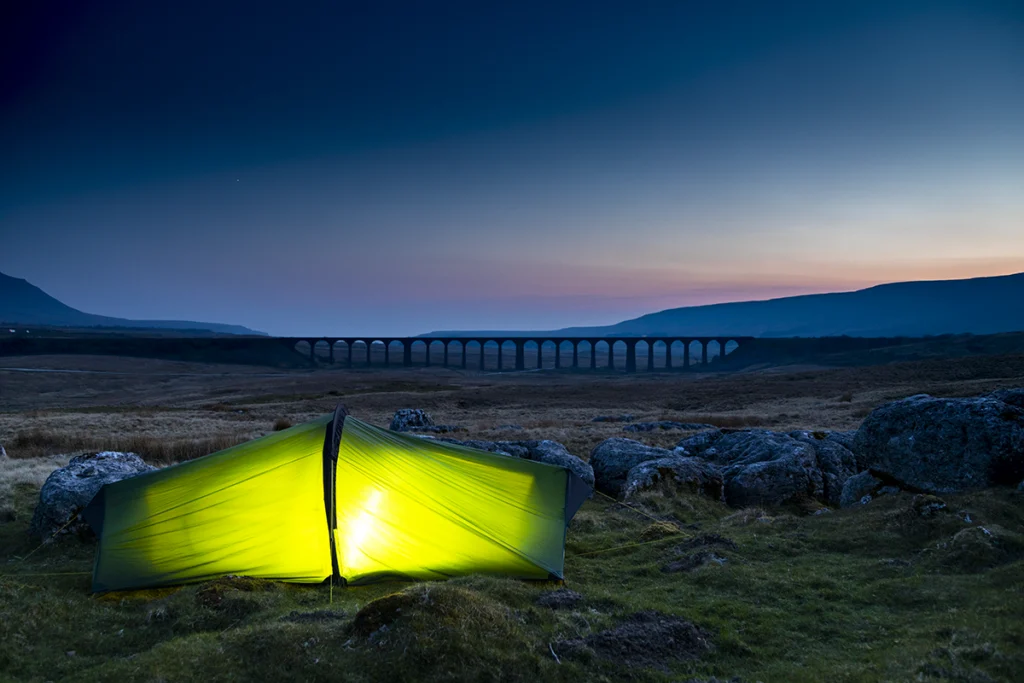
Better Ventilation Options
Three-season tents like the MSR Hubba Hubba NX offer extensive mesh panels and adjustable venting. During warm nights in my Lowepro PhotoSport Backpack PRO 70L AW III, I appreciate kit that doesn’t trap excess heat.
Reasonable Pricing
Whilst premium 3-season equipment still commands serious money, it’s generally more accessible than 4-season alternatives. My Mountain Equipment Ibex Mountain Pant cost £120—expensive but not the £200+ that winter-specific trousers demand.
Faster Setup in Good Conditions
Without complex pole structures and extensive guy-line systems, 3-season tents pitch quickly. When you’re racing daylight after a long photography session with your Canon 5D Mark IV, simplicity matters.
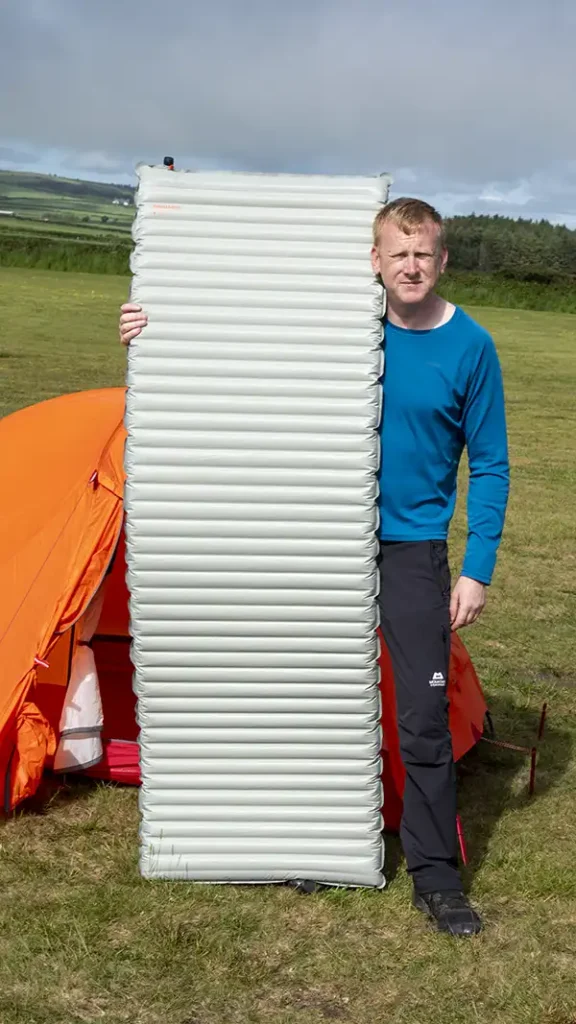
What Could Be Better with 3-Season Kit
Limited Safety Margins
Three-season equipment operates closer to its design limits. When my Rab Cinder Downpour Jacket faced genuine winter conditions on Cross Fell in the Peak District, its lightweight construction felt distinctly inadequate against driving snow.
Condensation Management
Lighter tent fabrics and reduced ventilation in extended bad weather create condensation issues. My MSR Access 2 tent excels here, but typical 3-season shelters struggle with moisture management during long, cold nights.
Durability Concerns
Weight-saving measures often compromise longevity. Whilst my Benro Tortoise tripod handles years of mountain abuse, ultralight camping kit requires more careful handling.
The 4-Season Advantage
Genuine Safety in Extreme Conditions
When I finally invested in proper winter kit, the difference was remarkable. My Snugpak Sleeper Expedition sleeping bag kept me comfortable during a February wild camp on Bleaklow in the Peak District where temperatures dropped to -15°C.
Superior Condensation Control
Four-season tents like the Hilleberg Allak manage internal moisture through sophisticated ventilation systems. Unlike 3-season alternatives, they’re designed for extended occupation during storms.
Bombproof Construction
Premium 4-season equipment withstands punishment that would destroy lighter alternatives. This durability justifies higher costs through extended lifespan and reliability when conditions matter most.
Peace of Mind
There’s genuine psychological comfort in knowing your kit can handle whatever British weather throws at you. This confidence transforms challenging trips from survival situations into enjoyable adventures.
Real-World Performance Comparison
Spring Conditions: Bleaklow, Peak District
3-Season Setup: Rab Mythic 600 sleeping bag, Terra Nova Laser Comp 2 tent, Therm-a-Rest NeoAir XTherm sleeping mat.
Conditions: April temperatures dropped to -2°C with wind and sleet.
Performance: The sleeping bag barely coped, requiring my Rab Mythic Ultra Down Jacket inside for additional warmth. The tent’s single-wall construction created significant condensation. Adequate but uncomfortable.
4-Season Alternative: Would have provided comfortable warmth and better moisture management.
Summer Conditions: Ribblehead, Yorkshire Dales
4-Season Setup: Testing winter gear in July seemed masochistic, but I wanted real experience.
Conditions: Warm, humid night around 15°C.
Performance: Completely unsuitable. The heavy sleeping bag caused overheating despite full ventilation, whilst the robust tent trapped heat and humidity. My Jetboil Flash cooking system made the situation worse by adding steam inside the limited ventilation.
Lesson: Four-season equipment excels in its intended conditions but becomes a liability in mild weather.
Autumn Conditions: Ingleborough, Yorkshire Dales
3-Season Setup: Pushing boundaries in October.
Conditions: Started mild but temperatures plummeted to -5°C with strong winds.
Performance: This kit reached its limits but held together. My Alpkit Vayper base layer and Rab Geon Pull-On provided crucial additional insulation. A close call that could have gone badly wrong.
4-Season Alternative: Would have handled conditions comfortably with safety margin remaining.
Winter Conditions: Helvellyn, Lake District
4-Season Setup: Proper winter equipment finally getting its intended workout.
Conditions: February night with -8°C and snow.
Performance: Excellent. Warm, dry, and comfortable throughout the night. This kit performed exactly as intended, providing security rather than mere survival.
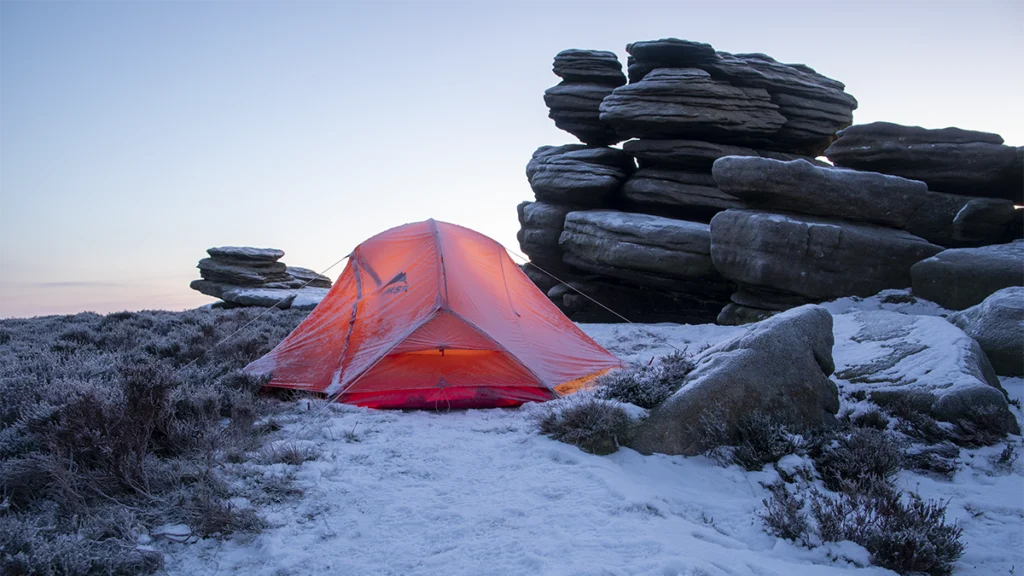
Kit Integration Strategies
The Modular Approach
Rather than maintaining separate equipment sets, I’ve developed a modular system. My base includes quality 3-season items like the Rab Cinder Downpour Jacket and Mountain Equipment Ibex Mountain Pant. For harsher conditions, I add components like my Rab Argon Pants and upgrade from the basic sleeping mat to a winter-rated system.
Photography Considerations
Cold weather demands different camera protection strategies. My Canon EF 70-200mm f/2.8L USM II performs differently in extreme conditions, requiring adapted techniques that 4-season equipment facilitates through superior shelter and warmth.
Weight vs. Safety Balance
My typical 3-season load sits around 12kg including camera kit. Winter additions push this to 16kg, but the safety margin justifies the penalty. The Lowepro PhotoSport Backpack PRO 70L AW III handles both loads comfortably.
Alternative Equipment Recommendations
Budget 3-Season Option: Vango Banshee 200 System
Total Cost: Around £300-400
- Vango Banshee 200 tent (£120-140)
- Snugpak Travelpak 2 sleeping bag (£80-100)
- Highlander self-inflating mat (£40-60)
- Basic performance adequate for mild conditions
Premium 3-Season Setup: MSR/Rab Combination
Total Cost: Around £1,200-1,500
- MSR Hubba Hubba NX tent (£450-500)
- Rab Mythic 600 sleeping bag (£400-450)
- Therm-a-Rest NeoAir XLite mat (£180-200)
- Professional-grade performance with weight optimisation
Entry-Level 4-Season Kit: Mixed Brand Strategy
Total Cost: Around £800-1,000
- Wild Country Zephyros Compact 2 tent (£250-300)
- Mountain Equipment Glacier 600 sleeping bag (£300-350)
- Alpkit sleeping mat with closed-cell backup (£120-150)
- Genuine winter capability without premium pricing
Premium 4-Season System: Hilleberg/Rab Ultimate
Total Cost: Around £2,000-2,500
- Hilleberg Allak 2 tent (£1,000-1,100)
- Rab Andes 800 sleeping bag (£500-600)
- Exped DownMat winter system (£300-400)
- Uncompromising performance for serious conditions
Making the Right Choice for Your Adventures
The decision between 3-season and 4-season equipment depends on honest assessment of your actual camping conditions rather than aspirational ones.
Choose 3-Season Kit If:
- Most camping occurs April through October
- Weight matters significantly for your adventures
- Budget constraints require careful prioritisation
- You’re building initial wild camping experience
Choose 4-Season Equipment If:
- Regular winter camping is your goal
- Safety margins matter more than weight savings
- Budget allows investment in specialised kit
- Extreme conditions are part of your adventure plans
Future Kit Evolution
My equipment continues evolving based on real experience rather than marketing promises. The Sawyer Mini Water Filter and CamelBak Crux bladder work identically across seasons, whilst my Petzl Tikkina headtorch faces different demands in winter’s extended darkness.
Next additions include upgrading my Rab Baltoro Gloves to a more sophisticated hand protection system and possibly investing in a true expedition sleeping bag for high-altitude winter photography projects.
The Bottom Line
Three-season equipment offers an excellent introduction to wild camping with reasonable weight and cost. It handles most conditions competently whilst teaching fundamental outdoor skills. However, serious year-round adventures demand 4-season kit’s superior protection and safety margins.
My recommendation? Start with quality 3-season equipment to build experience and understand your preferences. Upgrade to 4-season kit when conditions demand it rather than when marketing suggests you need it.
The best equipment is what keeps you safe and comfortable in the conditions you actually encounter, not the extreme scenarios you might imagine. Whether that’s a lightweight summer setup for the Yorkshire Dales or bombproof winter kit for the Lake District fells, choose based on reality rather than aspiration.
After dozens of nights testing equipment across genuine four-season conditions, I’ve learned that the right kit transforms challenging situations from survival ordeals into memorable adventures. That’s worth every penny and gram.
What’s your experience with 3-season vs 4-season kit? Have you found the sweet spot between weight and protection for your adventures?
For more Reading Check Out this article on 3 Season vs 4 Season Tents

